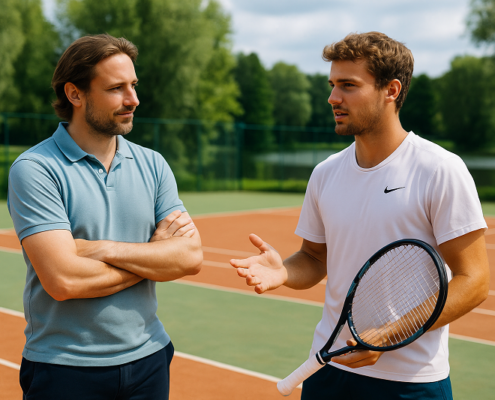Developing calm, confidence, and relaxation in racket sports
Tennis and table tennis both demand strong mental stability. In my work as a sports psychologist, I often emphasize a key principle: playing point by point — accepting mistakes, staying calm, and refocusing immediately on the next rally.
Having been a table tennis player myself, competing for clubs such as Bayard Argentan (Pro A, France) and Logis Auderghem (Belgian Superdivision), and with experience supporting Belgian players and ATP tour athletes, I’ve seen how much the mental game determines the difference between consistency and underperformance.
Point by point: the foundation of mental stability
Losing a point should not disrupt emotional balance. The goal is to return to the present, focus on the next task, and avoid the downward spiral of frustration or doubt.
Managing wins and losses
These sports involve many matches — you win, you lose, sometimes several times in the same week. It’s essential to process results quickly, rebuild confidence, and refocus on upcoming games.
Playing relaxed and letting go
Fear of failure tightens the body and blocks movement. Regaining relaxation, daring to take initiatives, and letting go improve fluidity, breathing, and overall shot quality.
The specific challenge of table tennis
Small racket, small table, light ball — a tiny margin for error. At any moment, tension can lead to loss of control. Staying calm, feeling the ball, and relying on precise sensory feedback are essential for consistency and precision.
Integrated mental training
Drawing on his experience as a former elite table tennis player, Manuel Dupuis sometimes works directly on the court with athletes — playing with them and integrating mental routines between points to build useful habits under real conditions.
Touch, relaxation, fluidity, breathing, quick refocusing… This approach, called integrated mental training, connects technical practice and psychological preparation.


